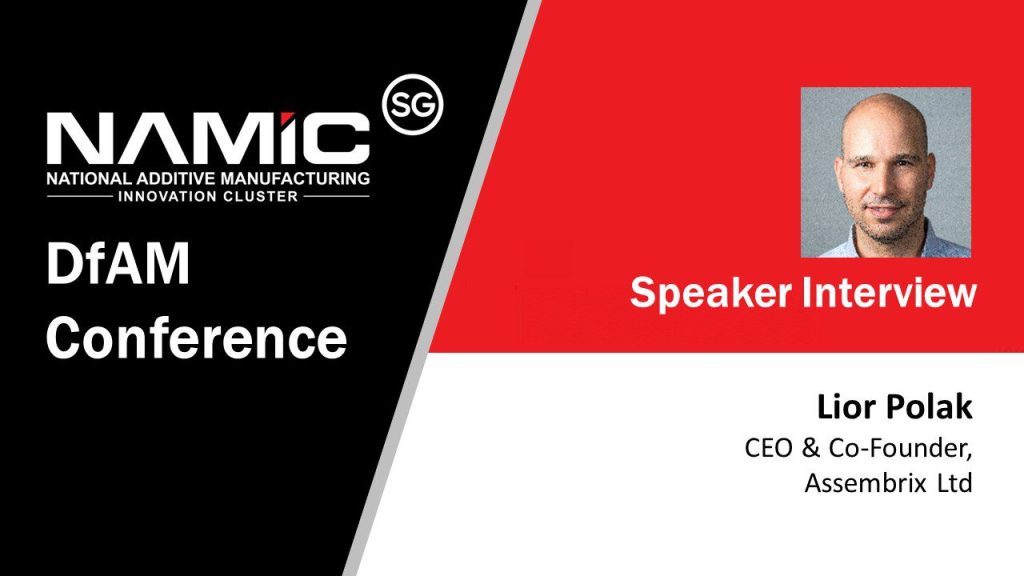Please share how 3D Printing, in particular DfAM could improve quality of life in the future?
3D printing affecting quality of life in many aspects; it starts from breaking the boundaries of design, allowing engineers to create things they couldn’t before and from that point affecting the entire value chain of products in our life from medical devices to transportation. The capability that anyone can actually have his own manufacturing facility gives opportunities to companies all over the world to rethink and redesign their manufacturing process and consequently, affecting all human being life in both reducing cost, offering better and customized products and in a timely manner.
Please share what your views are on the evolution and growth of Additive Manufacturing processes and materials to revolutionise manufacturing
While witnessing more than 30 years where 3d printing was mostly dedicated to prototyping, the revolution in which companies are officially adopting 3d printing to their manufacturing full process is finally here. As part of our work at Assembrix, we are frequently working with service bureaus all over the world as well as key manufacturers in several industries. We are seeing more and more not only new machines and capabilities but also the result be it amazing products whether made of metal or others advanced materials ready-made to be used.
How does DfAM helps in productivity and cost reduction with respect to your industry?
While working with leading aerospace companies, DfAM is clearly affecting both productivity and cost reduction. First it helps design light-weight structures that save airplanes fuel making the new airplanes more efficient, then it enables the creation of very complex products in one-shot and reducing tremendously the time it takes to make a product. Last, the capability to create customized small batches anywhere and anytime streamlines all manufacturing process.
What are different challenges startups and MNCs face in adopting Design for AM?
The core challenge as I see is that the entire industry is still based on trial and error and a lot of know-how gained by experience rather than being educated in universities. Design for AM is still a niche, therefore limiting the potential. Nevertheless, efforts in both EDU and multinational is happening and as time goes by there is a very big change happening.
What does Additive Manufacturing mean to you and to your business journey?
As an entrepreneur in the field of AM, it is amazing to see things I was dreaming about few years ago already happening. As Assembrix is at the forefront of the technology, we often times need to reinvent the wheel. This requires a lot of passion and imagination combined with long term business strategy. Additive for us is not yet another trend we read about in the tech news but rather a revolution happening right under our hands and the fact that we can shape it and affect it worth everything.
Please quote 1 successful application of DfAM.
Metal printing capabilities are real game changer in my opinion and the capability to design end-products without and boundaries and limitations in multiple metal materials is the most successful application.

